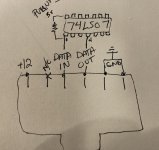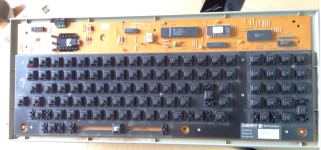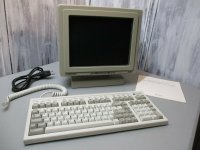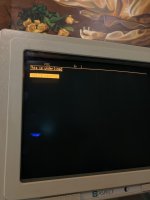mykrowyre
Experienced Member
This may not be the correct forum but I figured people here would have the most experience with dumb terminals.
I recently purchased a 1992 Liberty Freedom (ASPECT?) amber dumb terminal.
It works, but the keyboard is not the correct keyboard, and it did some damage when the seller tried to use it.
I repaired the damage to the keyboard but sadly the keyboard can't be made to work with this terminal as it's a data/clock style keyboard.
Tracing the terminal mainboard circuit it seems to be serial, I found the keyboard RJ6 connector has the following pinout (see photo).
I've tried to find pinouts for other terminals of the time but haven't had any luck.
One signal pin is and input and the other an output of the 7407.
Not sure if it's serial TX/RX, or if it's data a data pint from keyboard and a clock pin from the terminal?
There is one pin which is not connected to anything.
Manufactured sticker date says 1992.
Finding an ASPECT keyboard is nearly impossible, so I am hoping they used a common protocol/keyboard design of the time but I don't know what that would be.
I recently purchased a 1992 Liberty Freedom (ASPECT?) amber dumb terminal.
It works, but the keyboard is not the correct keyboard, and it did some damage when the seller tried to use it.
I repaired the damage to the keyboard but sadly the keyboard can't be made to work with this terminal as it's a data/clock style keyboard.
Tracing the terminal mainboard circuit it seems to be serial, I found the keyboard RJ6 connector has the following pinout (see photo).
I've tried to find pinouts for other terminals of the time but haven't had any luck.
One signal pin is and input and the other an output of the 7407.
Not sure if it's serial TX/RX, or if it's data a data pint from keyboard and a clock pin from the terminal?
There is one pin which is not connected to anything.
Manufactured sticker date says 1992.
Finding an ASPECT keyboard is nearly impossible, so I am hoping they used a common protocol/keyboard design of the time but I don't know what that would be.
Attachments
Last edited:














